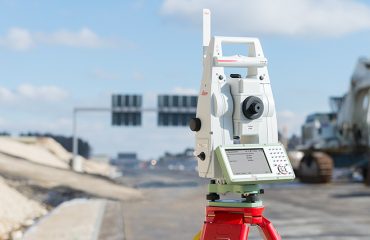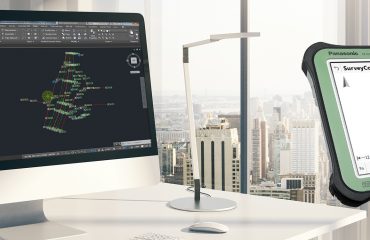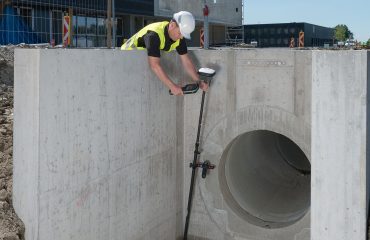How satisfied are you with your surveying methods? If you’ve studied the basics and honed your skills over decades of application on increasingly complex projects, you probably feel pretty confident in your expertise, as well you should. But what if that isn’t enough? If you knew there was a more effective way to do the work—one that would provide your employees and clients better results—would you reconsider your approach?
For Donald L. Smith, PLS, principal of BL Companies, the question wasn’t theoretical. More than 10 years ago, he recognized the shift to 3D environments and launched a digital transformation initiative within his firm. Today, the company is a recognized leader in 3D visualizations and informative, actionable deliverables. BL Companies’ move into 3D laser scanning, first with scanning total stations and then high-speed full-dome laser scanners, highlight three key areas every surveyor should evaluate when considering a technology investment.
1. Level of Detail
If you’re still relying on traditional surveying approaches for existing-condition surveys and as-builts, you might not be capturing enough detail. “There’s a much greater accuracy associated with laser scanning, but the amount of detail you’re able to extract is much greater as well,” Smith says in a webinar that is now available on-demand. “Scanning provides a detailed, accurate 3D model of a site that is essential for building information modeling (BIM) and clear communication about the project.”
2. Safety
Getting access to dangerous or tight spaces without putting crews in harm’s way is paramount. “As surveyors, we never want to have to ‘play frogger’ in the middle of a heavily traveled roadway to get the data we need,” Smith says. “Laser scanning gives us a way to capture the data from a distance. We can use technology to maximize safety.”
To illustrate, Smith recalls a project that required getting locations on the tops of sanitary manholes, catch basins, gas valves and other utilities in a busy roadway. Using a total station required two people—one to collect the data, and the other to watch for traffic. “That was the only way we could mitigate that situation and feel like we were going to be able to go home at the end of the day and not lose somebody to the effort, but it was scary,” he acknowledges.
With the MS60 MultiStation, a high-performance scanning total station, all the data can be captured by setting up over a traverse point off the roadway and letting the instrument scan at up to 30,000 points per second. Pulling the data into Infinity office software provides access to accurate, comprehensive point clouds. “In one project, I realized I didn’t get a location in the center of a critical area for grading,” Smith says. “All I had to do was create that point in Infinity and import it into Civil 3D, and I was able to create an incredible surface. So now we’re spending less time in roadways, which means a higher degree of safety, and we have additional data that we can pull from. The safety benefits of laser scanning can’t be overstated.”
3. Completeness of Data
For both QA/QC and clear communication, being able to overlay point clouds on linework enables you to quickly create detailed visualizations that bridge any gaps in understanding and eliminate return trips to the field.
“Now we have added data sets where we’re able to significantly increase quality, increase the number of locations and redundancy,” Smith says.
“Think about a site where you have to locate a couple of signs as part of some ALTA requirements, or specific existing conditions you need to locate for proposed improvements, and you forget to do that,” he explains. “When you’re able to go back to your datasets and pick up those details very accurately in the point clouds, you’ve just saved the return trip to the site. How much is that worth?”
With today’s technology, the move from traditional surveying to laser scanning can be done easily.
“The thing I love the most is that I can have one instrument that really changes the way we’re conducting business,” Smith explains. “I can go out in the morning with the MS60, which is a one-second total station, and I can do my construction layout with the most accurate instrument we have in our toolbox so our contractors can do the concrete pours. And I can stop off and do stakeout for a property line where somebody wants to put up a fence. And then I can do high-end topography for a new sidewalk that’s going in front of a pharmacy to ensure it will conform to ADA requirements. Not only do I take the traditional locations with my surveying instrument, but I can do a very dense scan afterward with the same instrument for immediate validation. And if there are any areas that don’t meet minimum requirements, I can quickly identify where—which panels, which sections—without taking a shot every 6 inches to make sure I have enough locations.”
The potential with laser scanning, says Smith, is eye-opening. “Once you start using laser scanning, you start to understand what digitalization can really look like and what it can offer to us as professional surveyors. It can help shape the way we conduct business and plan our work.”
Watch the full webinar here: Automation, Digitalization and the Rise of the Next Generation Surveyor
RELATED: How BL Companies Provides Premier Service with Point Clouds




